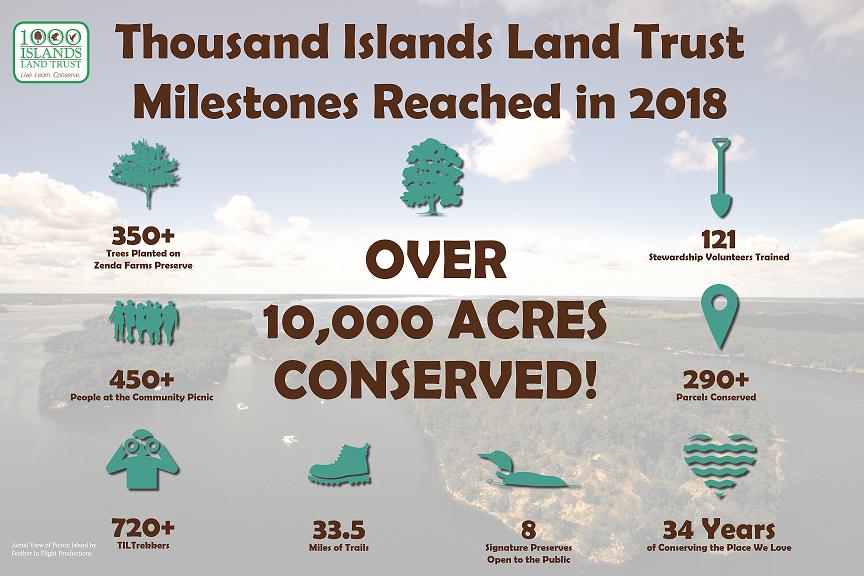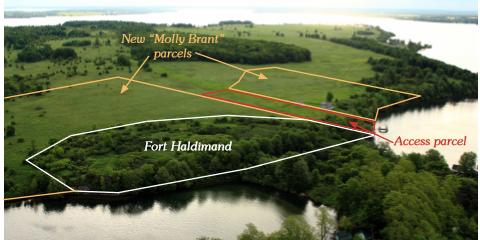10,000 Acres Conserved
Conservation projects in 2018 took TILT’s land portfolio past the 10,000 acre mark. Several of these acquisitions are adjacent to existing conservation land, expanding contiguous areas for wildlife habitat.
As an expansion of S. Gerald Ingerson Preserve, the Fitzgerald parcel was acquired in July to allow TILT to extend the Sissy Danforth Rivergate Trail into the Village of Clayton. The 6-acre lot will soon host a parking area and 1,000 feet of new trail leading to the historic trestle bridge over Black Creek. TILT hopes to begin work on the parking area and trail extension this summer.
A substantial private donation allowed TILT to acquire two separate parcels, a total of 33.8 acres, on Carleton Island adjacent to TILT’s Fort Haldimand Preserve. Purportedly the site of Molly Brant’s quarters during the American Revolution, the acquisition protects against the potential loss of any historical resources on the property.
Also adjacent to TILT’s Fort Haldimand Preserve on Carleton, the Carver parcel will provide the only reasonable water access to the Fort. Its acquisition will effectively create a conserved buffer around Fort Haldimand, protecting any historical values on/around the site.
Bordering TILT’s 2017 Broudy acquisition on Goose Bay, the 28.7-acre Weisberg parcel was purchased in late 2018. The property boasts rolling forested habitat adjacent to the north Goose Bay wetland complex. The property also features substantial undeveloped road frontage along Route 12.
In December, Jim Tague graciously donated Toothpick Island to TILT. This 0.26-acre undeveloped island in Chippewa Bay offers breeding and loafing habitat for seabirds and shorebirds that inhabit the St. Lawrence. This property will be added to TILT’s expanding portfolio of conserved rocks and shoals.
Also in December, TILT was able to secure a Water Quality grant and which made it possible to purchase the 64-acre Rusho property on Grindstone. Situated between Delaney Bay and TILT’s Rusho Farm Preserve, the new Rusho property’s forested riparian habitat and marsh fringes will serve as a sanctuary for the Island’s wildlife in perpetuity.





